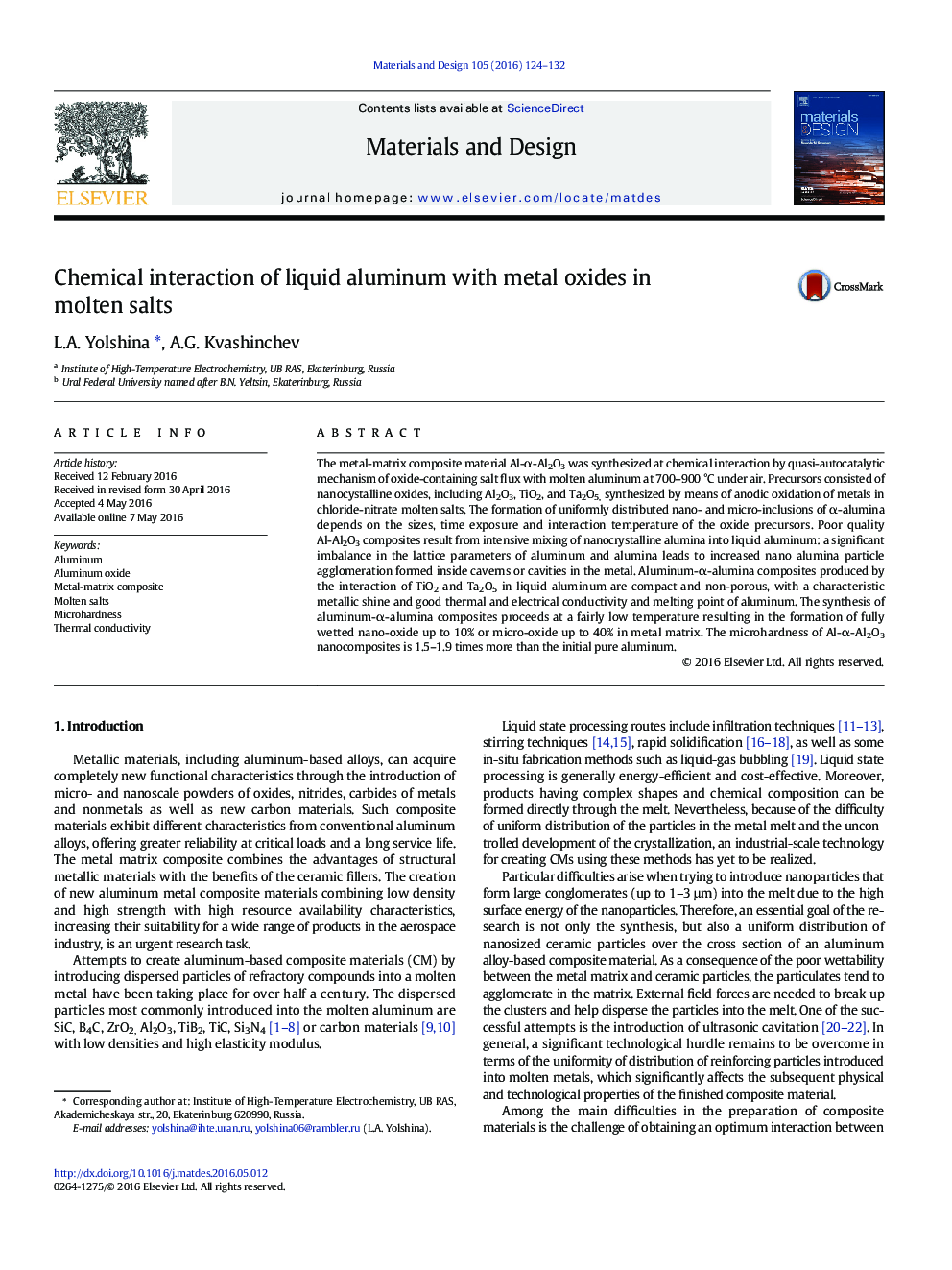| Article ID | Journal | Published Year | Pages | File Type |
|---|---|---|---|---|
| 827823 | Materials & Design | 2016 | 9 Pages |
•Synthesis by interaction of oxide powders with liquid aluminum under molten salts.•Formation of nano-αAl2O3 in aluminum depends on the oxide's sizes, time, temperature.•Synthesis metal-ceramic composites performed by quasi-autocatalytic mechanism.•Nanocomposite has thermal conductivity of aluminum and 2 times increased hardness.
The metal-matrix composite material Al-α-Al2O3 was synthesized at chemical interaction by quasi-autocatalytic mechanism of oxide-containing salt flux with molten aluminum at 700–900 °C under air. Precursors consisted of nanocystalline oxides, including Al2O3, TiO2, and Ta2O5, synthesized by means of anodic oxidation of metals in chloride-nitrate molten salts. The formation of uniformly distributed nano- and micro-inclusions of α-alumina depends on the sizes, time exposure and interaction temperature of the oxide precursors. Poor quality Al-Al2O3 composites result from intensive mixing of nanocrystalline alumina into liquid aluminum: a significant imbalance in the lattice parameters of aluminum and alumina leads to increased nano alumina particle agglomeration formed inside caverns or cavities in the metal. Aluminum-α-alumina composites produced by the interaction of TiO2 and Ta2O5 in liquid aluminum are compact and non-porous, with a characteristic metallic shine and good thermal and electrical conductivity and melting point of aluminum. The synthesis of aluminum-α-alumina composites proceeds at a fairly low temperature resulting in the formation of fully wetted nano-oxide up to 10% or micro-oxide up to 40% in metal matrix. The microhardness of Al-α-Al2O3 nanocomposites is 1.5–1.9 times more than the initial pure aluminum.
Graphical abstractFigure optionsDownload full-size imageDownload as PowerPoint slide
